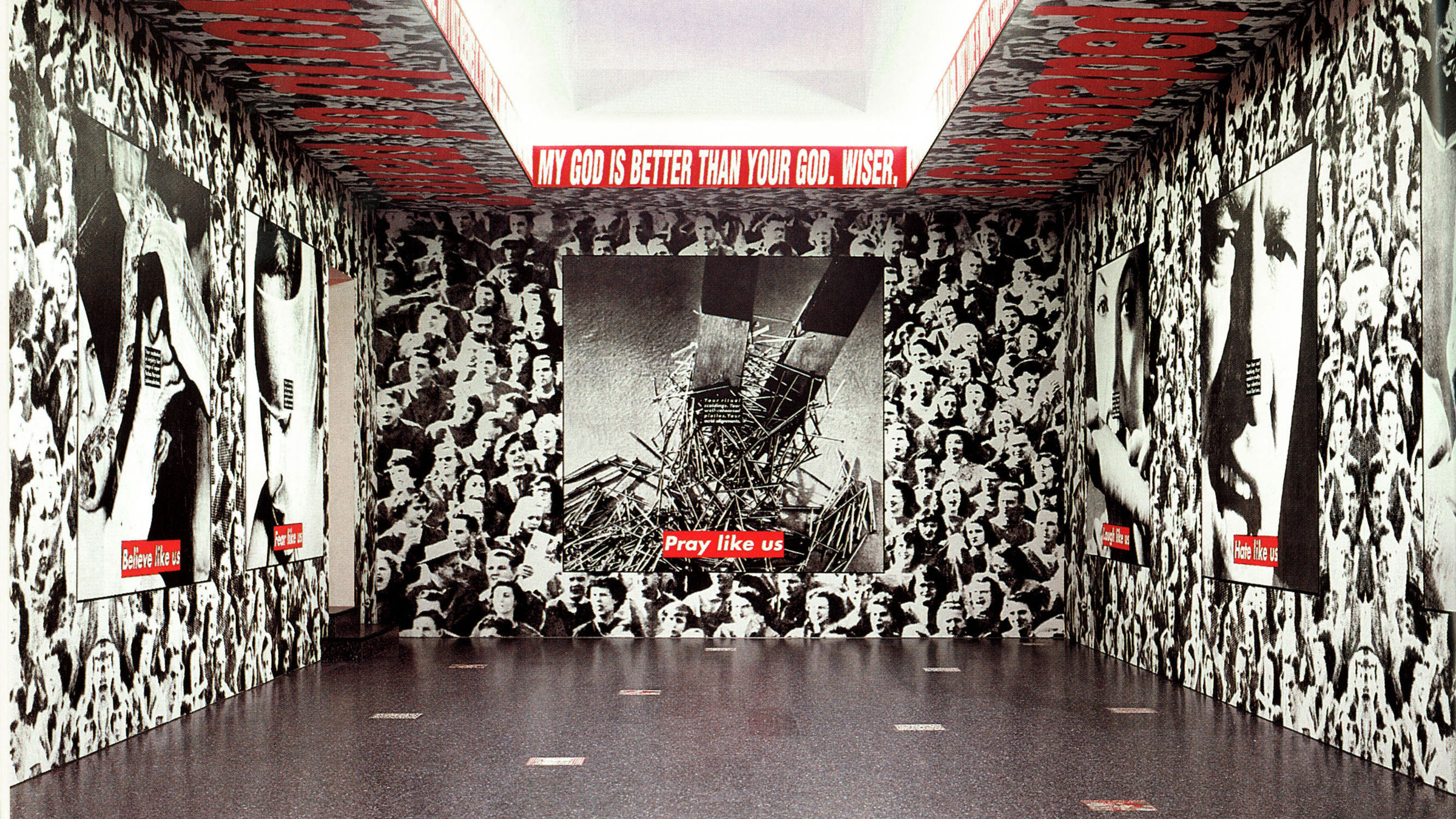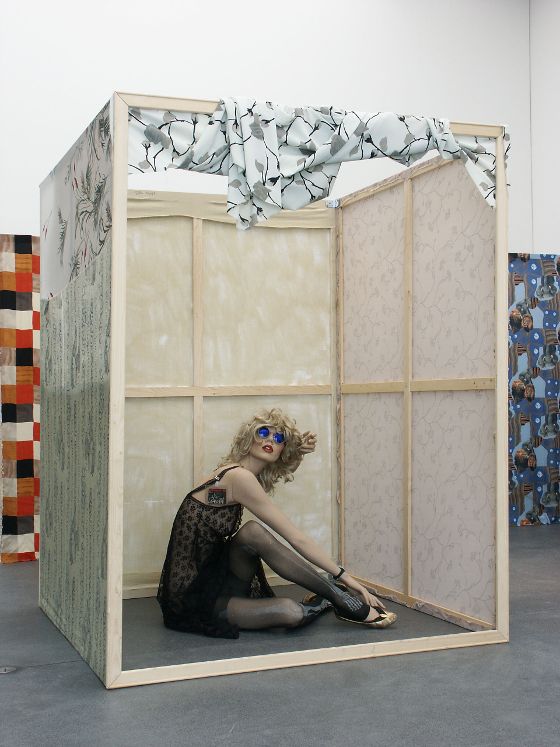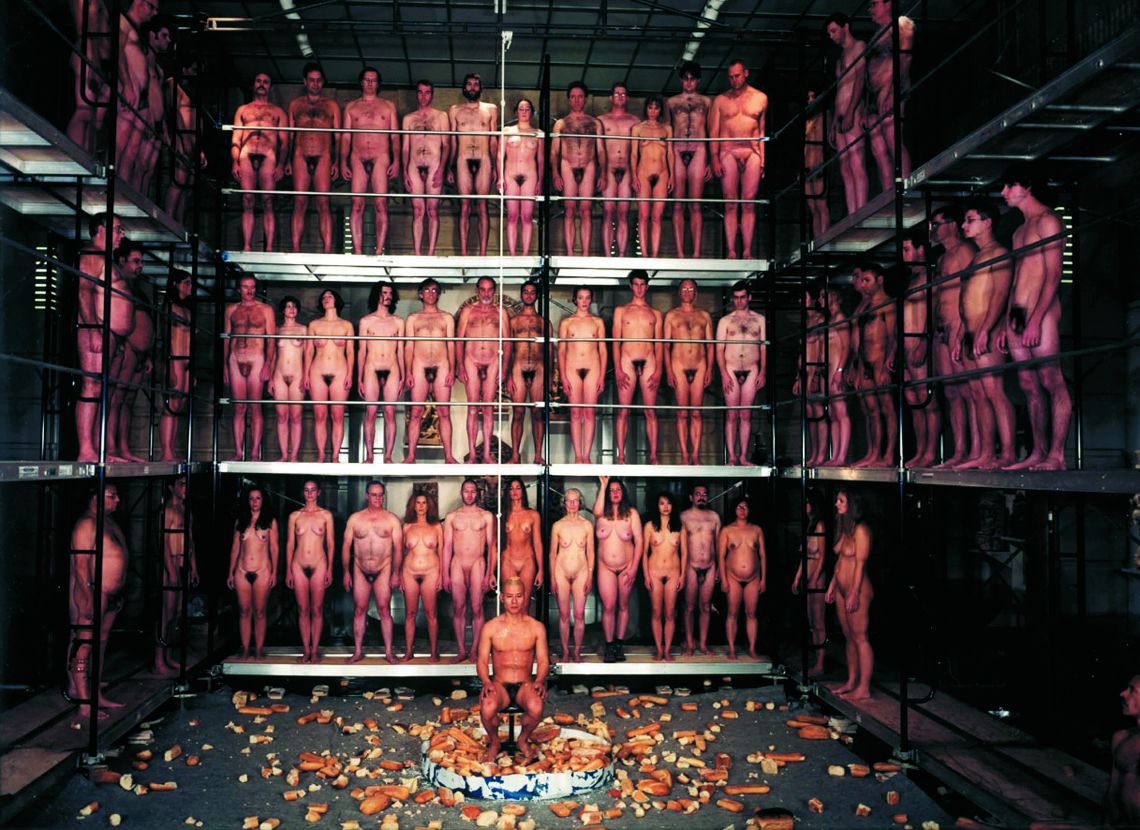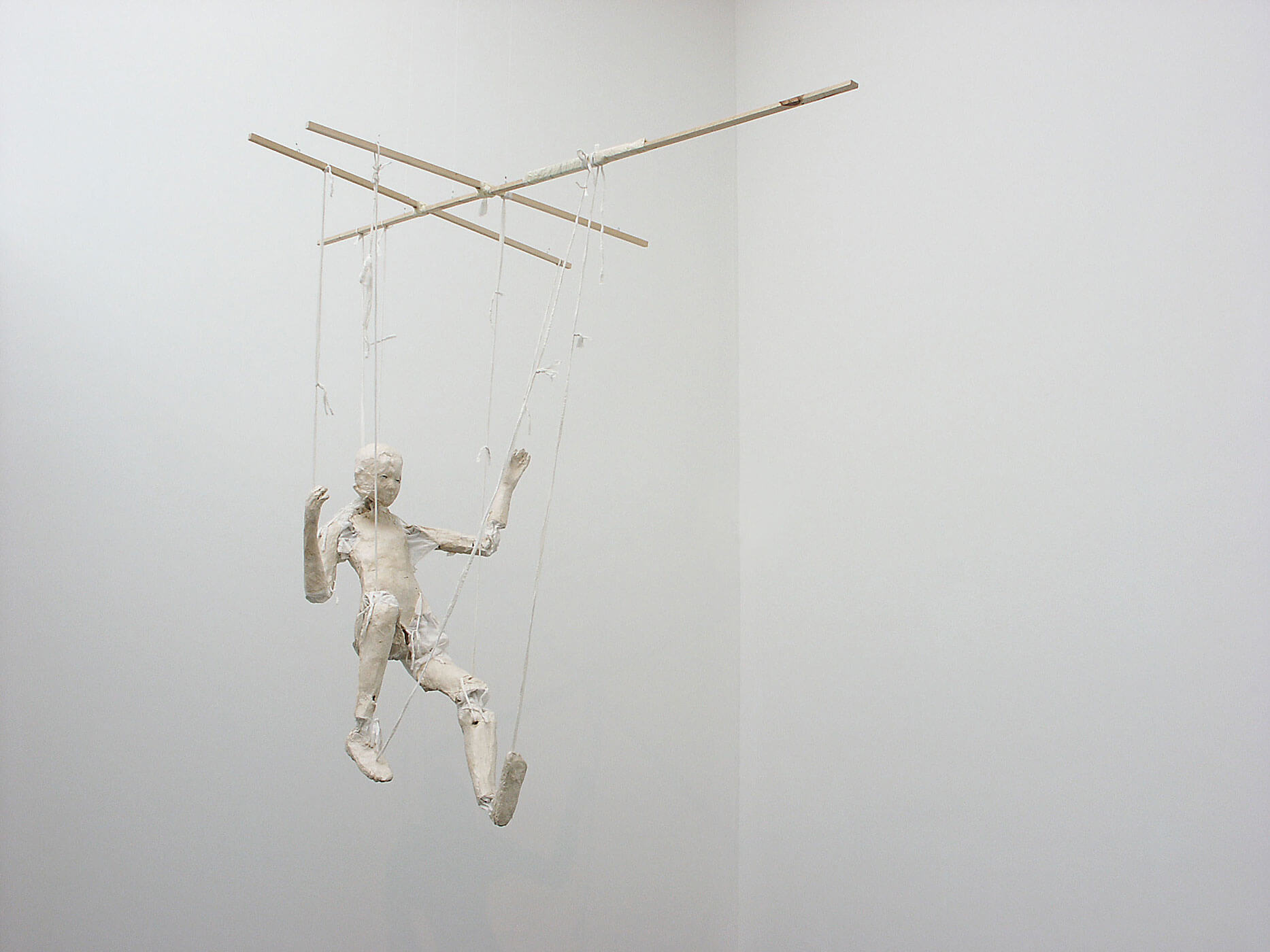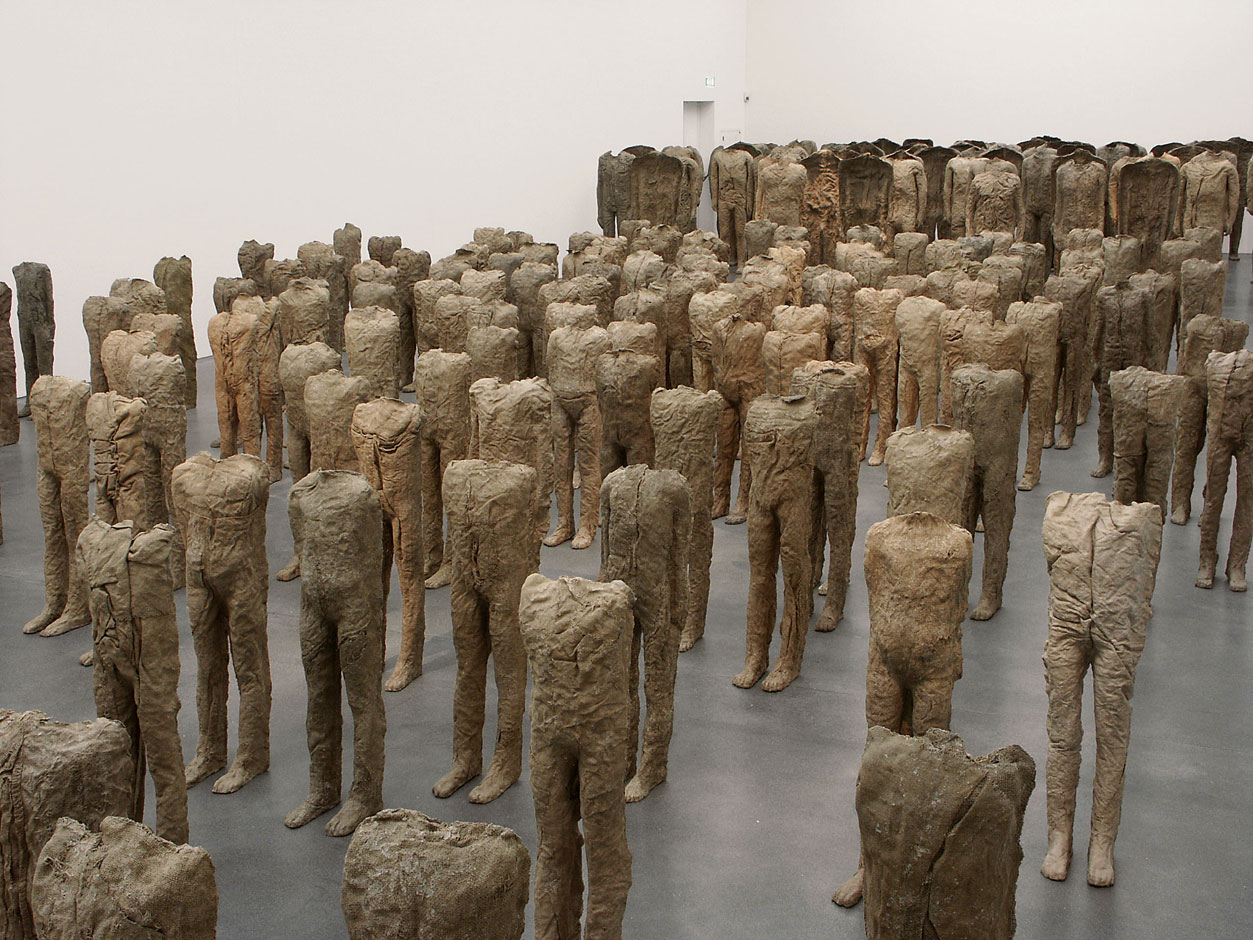me & more
In Kooperation mit Lucerne Festival
When am I myself? Where does my autonomy stop? Have I succumbed to mass-fascination? How can I escape its pressure? When does being part of a greater whole make me feel safe? Why do I expose myself? When do I draw back?
The exhibition me & more takes as its subject the self between the poles of individuality and its disintegration. The exhibition layout together with the immediacy of the artworks and the very special architecture of the museum space in Jean Nouvel’s Lucerne Culture and Congress Centre (KKL) allow us to encounter outstanding works of international contemporary art while at the same time making the unforgettable experience of our own self and its variable boundaries.
In the first room, visitorsand invited to take part in her interactive work by Swiss video artist Tatjana Marusic. Posing individually, they are largely left in the dark about the further use of the portraits that are taken. Only much later, as they pass through the exhibition, will they meet themselves again in a different context. A variant of this work is being shown during the Lucerne Festival in the foyer of the Luzerner Saal of the KKL.
In the largest group of her life-sized sculptures ever assembled, the Polish sculptress Magdalena Abakanowicz is presenting her work Hurma (Crowd) from 1993-2001. 250 headless shell-like shapes of adults and children made of burlap stand waiting as a silent crowd, unwilling to act. Abakanowicz was first discovered in Switzerland as a textile artist in the 60s. By now an internationally renowned artist, her work has not been given the exposure it deserves by Swiss museums, until now in Lucerne.
The qualitatively brilliant large-format photographic works of Miao Xiaochun, direct our eye to the context which defines each individual. The artist who was trained in Germany and now teaches at the Beijing Art Academy, stages a sculptural image of himself – decked out with the timeless attributes of a Chinese official – and thus evokes the significance both of the local surroundings and the historical dimension with respect to the definition of the subject.
The young African-American artist Laylah Ali is new discovery as far as Europe is concerned. The Kunstmuseum Luzern is showing twenty of her works on paper in a single room. Her small, subversive gouaches speak – in a deceptively harmless comic-book style – of constellations of power and the nastiness of political and social violence.
Yishai Jusidman is a young Mexican artist whose series of works shown in Lucerne, mutatis mutandis (1999), on the one hand adopts a refined conceptual approach to address the theme of artistic media, while at the same time being pictorial enough to point far beyond purely formal concerns. Jusidman rephotographs portraits of psychiatric patients, themselves based on photographic images, painted on canvas, and superimposes the original pictures on to these photographs. Blurred batches and areas that deviate from the original are, not least, a symbol of the blurred edges of the self or – pathologically speaking – between normality and madness.
The American artist Kiki Smith is considered a representative of what is known as abject art. In her most recent work she takes myths and fairy-tales as her subject-matter, more directly than she has done in the past, and exploits their potential for depth psychology. With her work Puppet (1999) she brings into the world an ambivalent creature whose helplessness as a marionette is more than compensated for by its demonic charisma.
Ernesto Neto, one of the best-known contemporary Brazilian artists has, in his Humanóides (2001), created works which act both as pure sculptures and as interactive objects. If we put them on, so to speak, like a second skin, they playfully unfold their effect, either altering our identity or making us aware of it.
Antony Gormley, one of the most high-profile British sculptors, and the 1994 Turner Prizewinner, is, astonishingly, receiving his first prominent show in a Swiss museum here in Lucerne, and doing so with one of his most spectacular works. European Field, made in 1994 in Southern Sweden, along with a large number of volunteers, almost forms the atmospheric core of me & more. Many thousands of little terra cotta figures become a sea of fired clay, their individual identities merging into an anonymous mass, and an inverse exhibition situation puts the spectator, so to speak, on the stage.
Being bound up in one’s own tradition, and being foreign and exposed in other cultures, is a constant theme in the works of the Chinese artist Zhang Huan. Indissoluble family ties, in the well-known series of photographs, Family Tree, are literally superimposed over the artist’s individual facial features, while his video My America (Hard to Acclimatize) depicts a performance in which Zhang Huan combines religious and spiritual rituals from various contexts with his own personal experiences as a Chinese emigrant in the USA.
The self in the broader context is one of the romantic subjects par excellence. In line with this tradition is a group of paintings by Ross Bleckner. Celestial architectures and cell structures mark out the worlds of the macrocosm and the microcosm. Bleckner’s elaborate painting technique creates captivating images. Despite a certain inclination to aestheticism they remain firmly earthbound, their imagery being always latently based in the subject of death, currently a special presence in the form of aids.
The American artist Barbara Kruger has, since the 70s, engaged with the power and seductive force of language and image. The attacks that she launches against visitors to the exhibition immediately force them to adopt a position, and subtly reveal the potential for manipulation in our most important means of communication. For me & more the artist is reconstructing an impressive spatial installation with sound from 1994. Barbara Kruger has also designed the poster for the exhibition.
The labels of performance and body art are well suited to an Austrian artist. But in its complexity, the work of Elke Krystufek engages in a highly reflective and critical way with her famous predecessors from the circle of the Vienna Actionists. Not only does she go beyond them in the radical nature of her self-revelation, but she makes the ambivalence between private and public, subject and object, outside and inside, immediately apparent. In Lucerne, Elke Krystufek is combining paintings, photographs and objects into a single installation.
In her video works, the young American artist Chloe Piene opens up the world of subcultures and marginal groups, and their rituals, patterns and role-playing. Little David (1999) shows a nine-year-old boy who takes scraps from the statements of a man in prison for murder, and imitates the airs of the macho-man in his language and gestures. The irreconcilable contrast of the picture of the puny boy in his underpants, acting in isolation against a dark nocturnal landscape – fighting off demons, so to speak – and the violent linguistic expression, performed in an alienated voice, evokes extremely oppressive emotions.
The conciliatory conclusion to the exhibition consists of works by Munich-based Swiss artist Urs Lüthi. Since his early work, dating back to the 60s, he has been his own object of investigation. The vision of the interaction between the individual and his surroundings has by now become transformed, almost unnoticed, from introspection to an openness towards the world and reflection about the artist’s ego. Urs Lüthi is showing works from the context of the series Art for a better life, and the exhibition closes with the serene, life-sized sculptural portrait of the artist at the end of his working day, which he places under the motto Art is the better life.
curated by Peter Fischer, in collaboration with Susanne Neubauer
The exhibition is supported by Stadt Luzern, den Kanton Luzern, ArtClubLuzern, Artephila Stiftung, Zuger Kulturstiftung Landis & Gyr, Lucerne Festival, Trisa AG, Triengen, Studio Schenker AG, Reussbühl.
